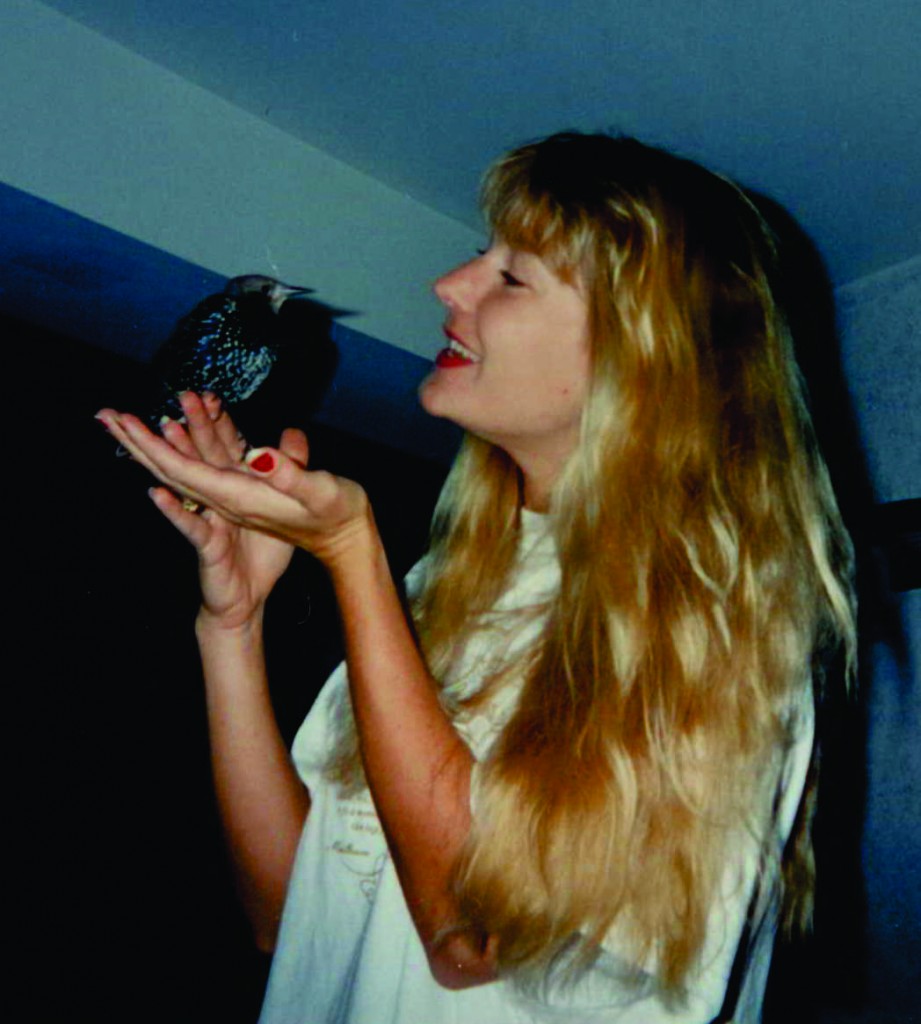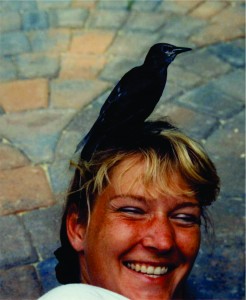Starlings
The other day I was on the phone with my friend Esther and observed that the starlings were starting to check out our house for crevices in order to start their new nests. The conversation turned toward the way that people see them, mostly as a nuisance for farmers. Even the Audubon Society’s website does not mention anything interesting or spectacular about the birds. Esther was surprised when I shared some stories of starlings I have raised.
First some background. The name is actually European Starling or Sturnus Vulgaris (hardly complimentary). One hundred of them were released around the turn of the last century in Boston, MA by an individual who wanted to introduce to North America all the birds that had been mentioned in Shakespeare’s plays – at least that was one of the versions I have read. And the story would be consistent – since Shakespeare does mention the starling in Henry IV.
The Washington Post carried an article in which they show the efforts to annihilate this bird from this continent. The article discusses shooting, poisoning, and trapping these amazing talking birds. Yes, I said TALKING.
I have raised several of these delightful, intelligent companions. They are a member of the Mynah Bird family and capable of imitating speech. Even in the wild, if you listen to one in the morning, you can hear them imitate the calls of assorted birds. Well, they can imitate the human voice even better than parrots. I have raised a macaw, a Senegal, an african grey, and none could come close in speech to the starling.
The first was a rehabilitation project given me by “Joan” who was a licensed wildlife rehabilitator for the Commonwealth of Virginia. Overwhelmed with animals to care for, she apprenticed me for several. I brought home “Francis” who had suffered enough that he promptly lost all the feathers on his head. With care they grew back. What we did not expect though, was his intelligence and conversation skills. Francis quickly learned his name, calling “Francis, Francesco” through the house. He learned all our habits, and could anticipate where we would go in the house and would fly there before we got there. He even learned to land on a water faucet – any of them in the house – as a signal to us that he wanted water. I would cup some water in my hand and he would drink straight from it.
Years later I got another starling baby,and this one I named Terpsichore after the muse for song and dance. It suited her personality perfectly. She was joyful and sang constantly. Her favorite words were “Terpsichore, Terpsichore, I love you Terpsichore,” said in exactly my voice, which unnerved visitors who did not know about her. It was strange for them to look at me in one room and hear my voice coming from another. One morning I was drinking coffee outside and something startled her, and she flew away. She never came back, but I felt in my heart that she was alright, and most likely causing a sensation in someone else’s yard.
I once raised a batch of three babies together and since they were raised with other birds they did not acquire the speech. But they were endearing and closely bonded. Once they fledged they were free to fly about outside. They would greet me when I came home from work by flying out of the trees and landing on my head.
It turned out I was not the only person with the talking starlings. I learned about another through a book called Arnie the Darling Starling by Margaret Sigl Corbo. It was a beautiful story about her saving, and becoming attached to this little darling bird. I was privileged to have a brief correspondence about our birds with Margaret. Here is a link to her Amazon Biography page and I strongly recommend the book.
Starlings are not protected, so you can raise them. And you may even be doing a farmer a favor by having less out there eating their crops (and save it from poisoning…). But the biggest winner is the person who gets to share the companionship of one of these incredible birds.


